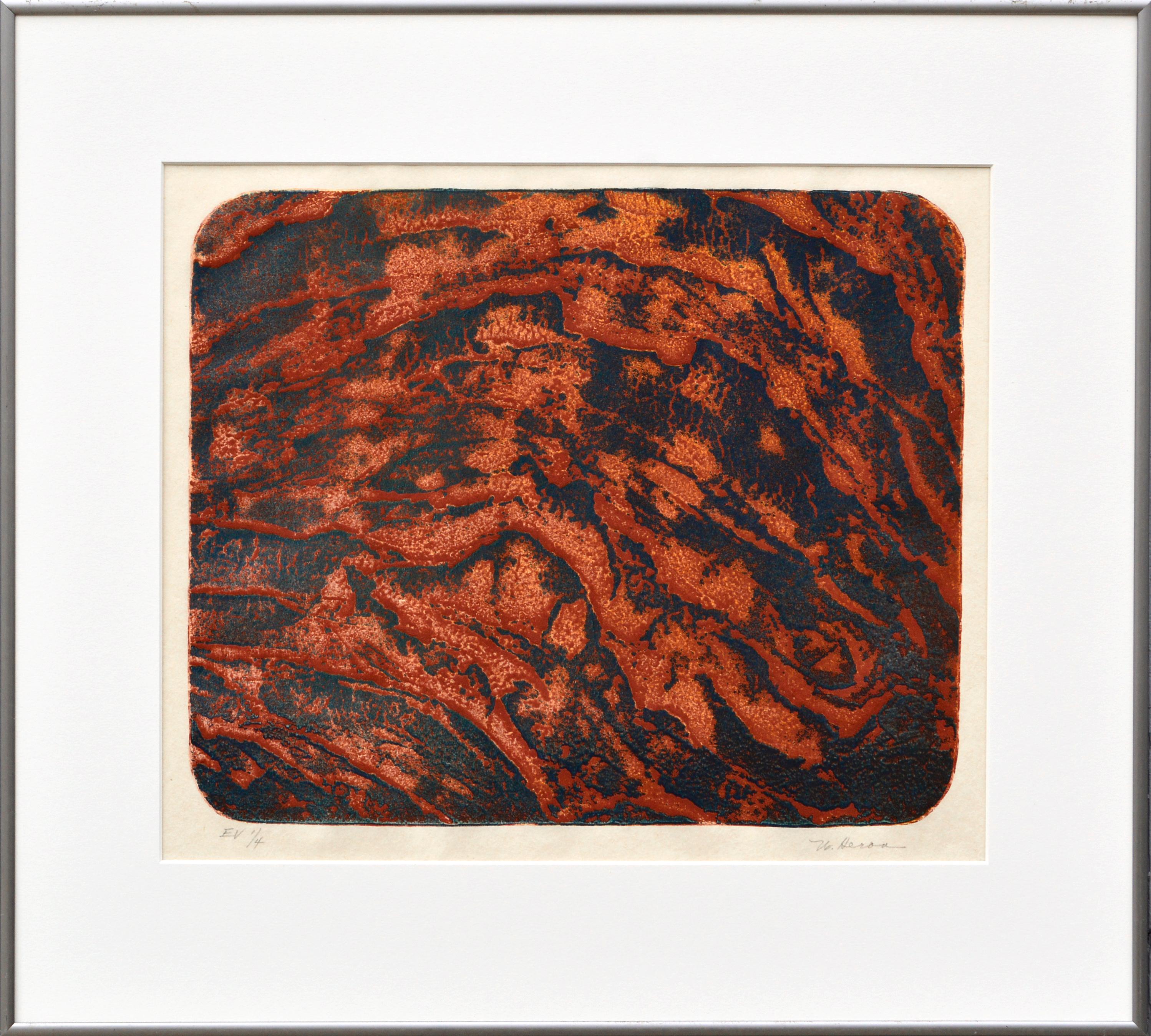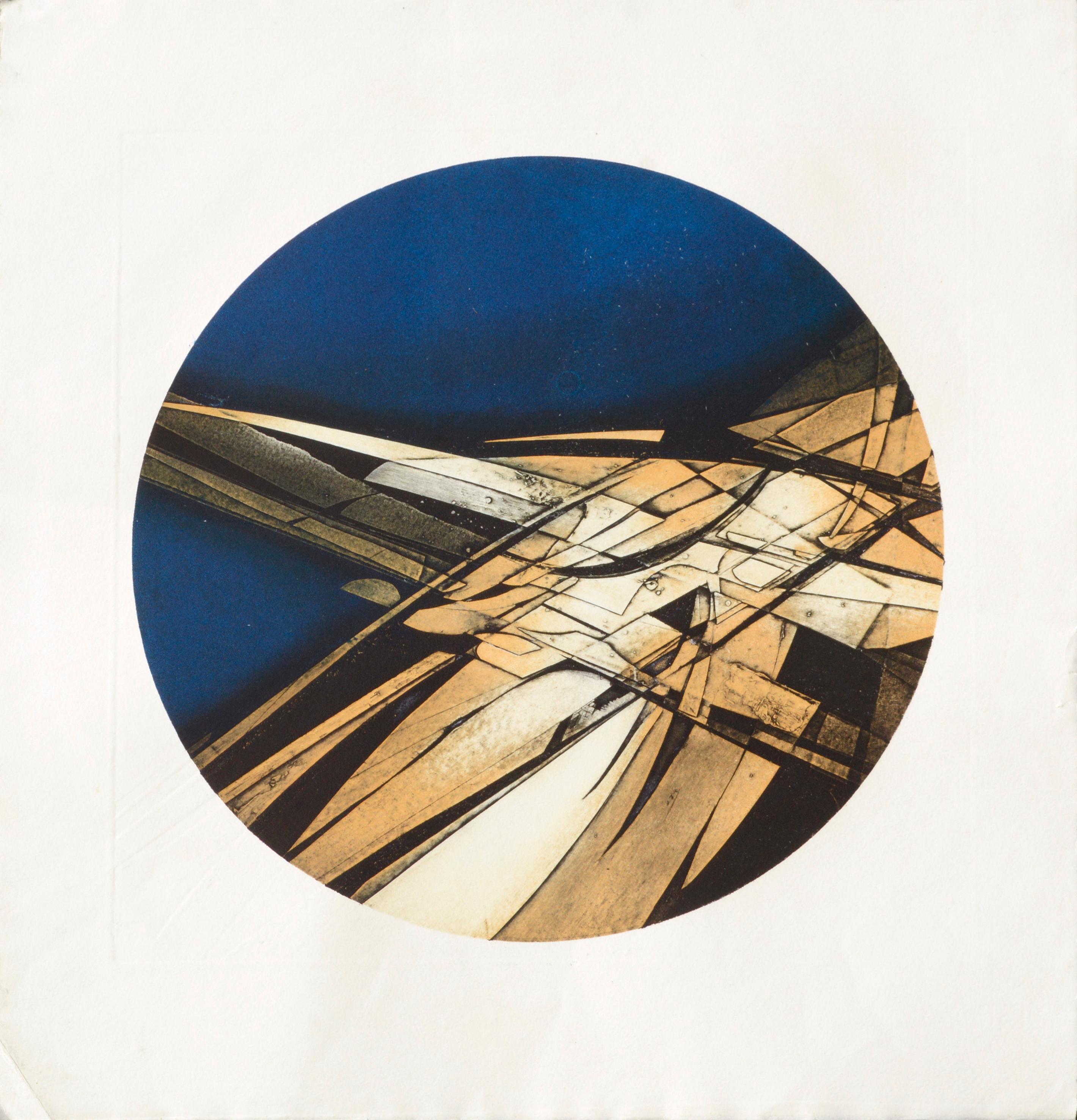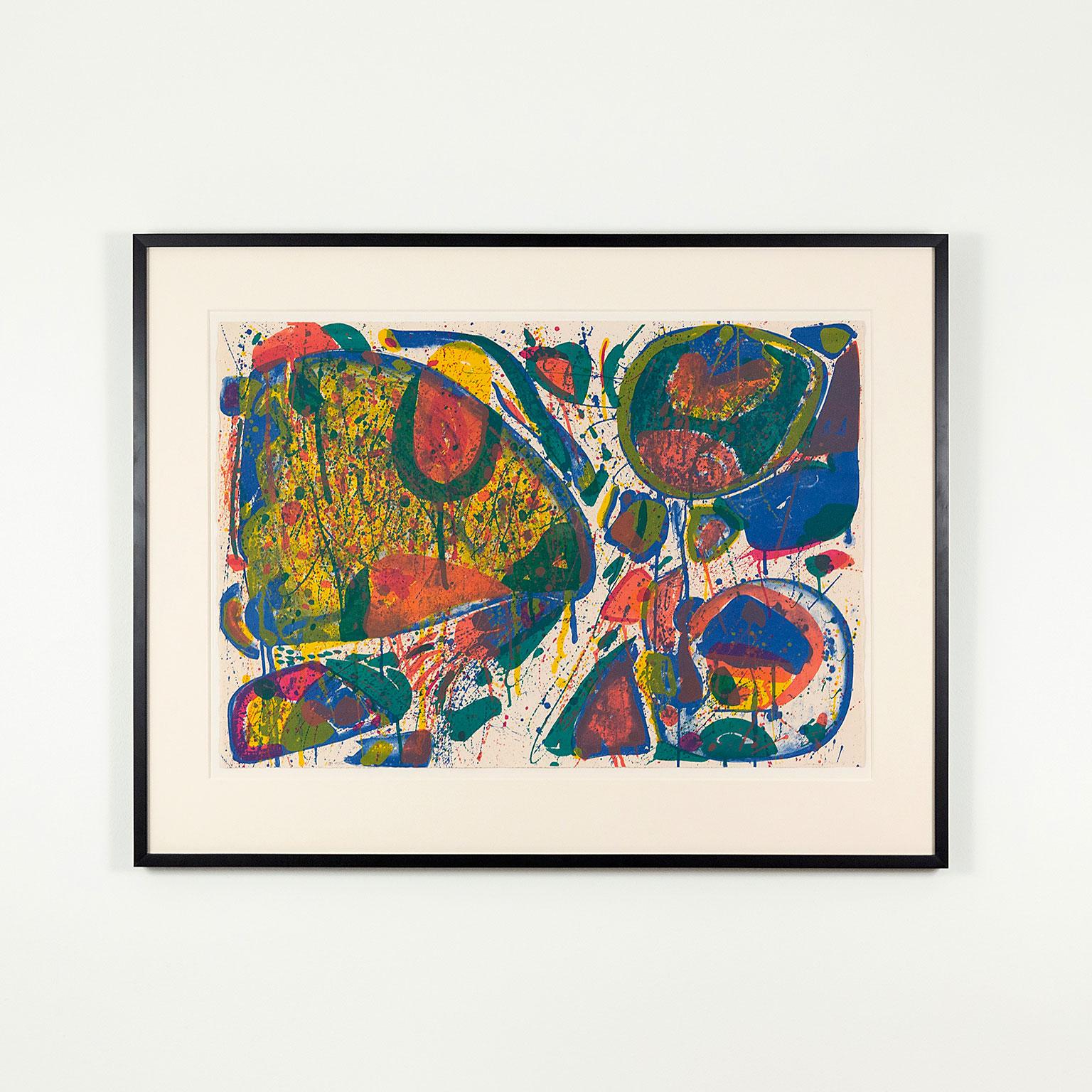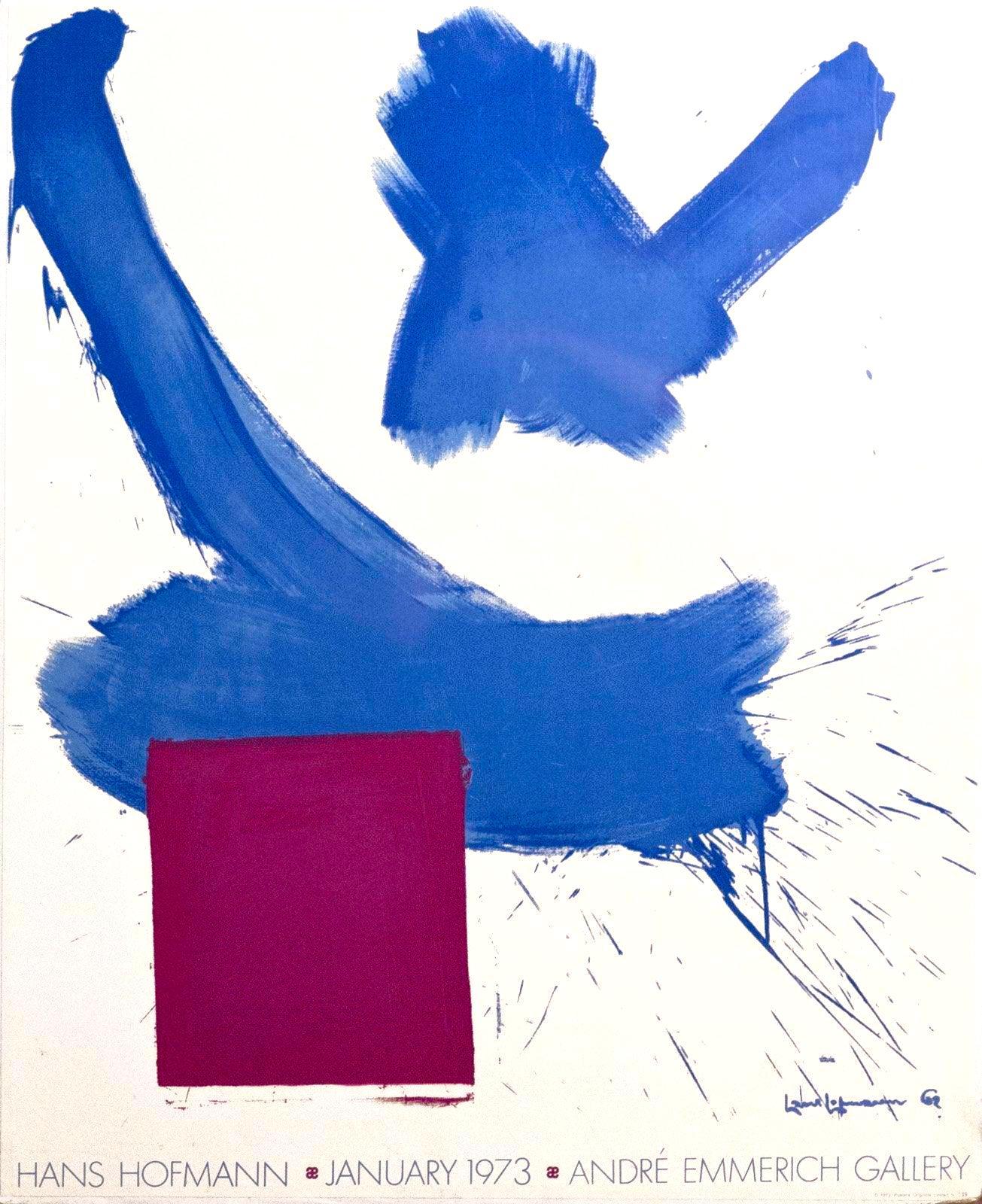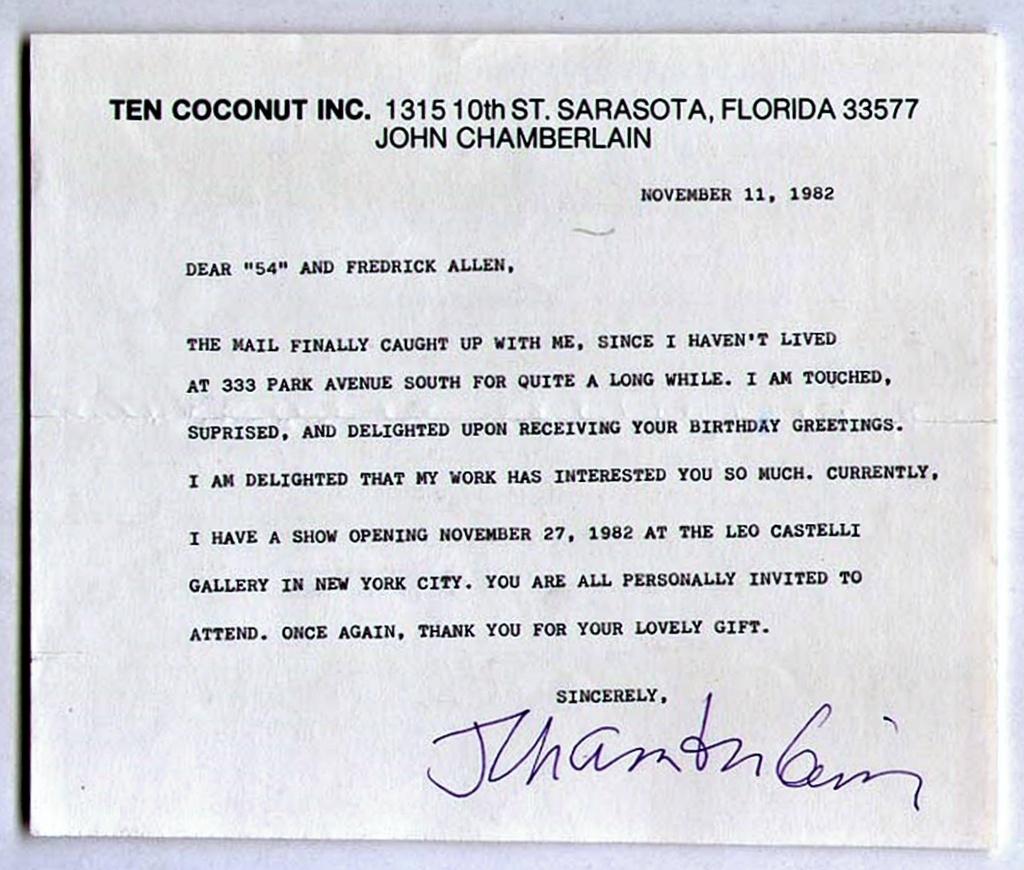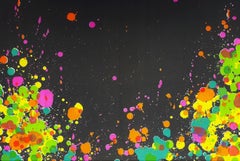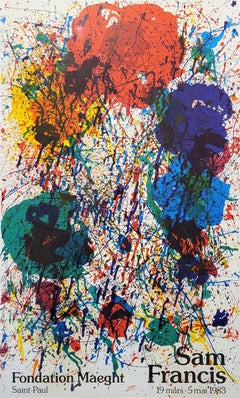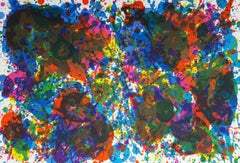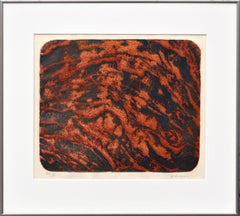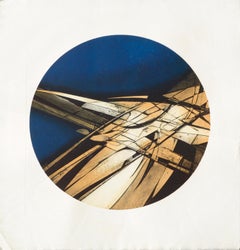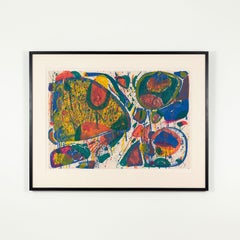Items Similar to Art 1981 Chicago Poster /// Abstract Expressionist Robert Motherwell Modern Art
Want more images or videos?
Request additional images or videos from the seller
1 of 14
After Robert MotherwellArt 1981 Chicago Poster /// Abstract Expressionist Robert Motherwell Modern Art1981
1981
About the Item
Artist: (after) Robert Motherwell (American, 1915-1992)
Title: "Art 1981 Chicago"
*Issued unsigned, though signed and dated by Motherwell in the plate (printed signature) upper right
Year: 1981
Medium: Original Lithograph, Exhibition Poster on Dove paper
Limited edition: 2,000. (There was also a signed and numbered edition of 150 on Arches Cover paper without margins or text)
Printer: Roger Campbell and Lee Funderburg of Tyler Graphics Ltd., Mount Kisco, NY
Publisher: Lakeside Group, Chicago, IL
Reference: "The Prints of Robert Motherwell - A Catalogue Raisonné 1943-1984" - Belknap No. 249, page 247; "Robert Motherwell - The Complete Prints 1940-1991" - Engberg No. 282; "Tyler Graphics - Catalogue Raisonné, 1974-1985" - Tyler No. 410:RM29, page 246
Sheet size: 39.5" x 27.5".
Condition: Never framed, has been professionally stored away for decades. Some minor edge wear. In excellent condition
Notes:
Printed in four colors: light tan, orange, deep red, and black. Poster produced for a special exhibition of various artists' work at the Chicago International Art Exposition, Chicago, IL from May 14-19, 1981. The image featured on this poster is Motherwell's 1977 collage "Untitled". This poster was the official poster for the 1981 Chicago International Art Exposition. Printer's imprint and artist's copyright lower center.
GIA Gallery Poster Disclaimer:
Not to be confused with thousands of contemporary inkjet/giclée/digital reproductions ignorantly or deliberately passed off as originals on the market today. The examples we offer here are the original period vintage (exhibition) posters, created and designed by, or under the supervision and authorization of the artist or their respective estate (posthumously), for various exhibitions and events in which they participated. If applicable, this poster is also fully documented within its respective artists' official catalogue raisonné of authentic graphic works, prints, and or posters.
Biography:
Robert Motherwell was born January 24, 1915, in Aberdeen, Washington. He was awarded a fellowship to the Otis Art Institute in Los Angeles at age 11, and in 1932 studied painting briefly at the California School of Fine Arts in San Francisco. Motherwell received a B.A. from Stanford University in 1937 and enrolled for graduate work later that year in the Department of Philosophy at Harvard University, Cambridge, Massachusetts. He traveled to Europe in 1938 for a year of study abroad. His first solo show was presented at the Raymond Duncan Gallery in Paris in 1939.
In September of 1940, Motherwell settled in New York, where he entered Columbia University to study art history with Meyer Schapiro, who encouraged him to become a painter. In 1941, Motherwell traveled to Mexico with Roberto Matta for six months. After returning to New York, his circle came to include William Baziotes, Willem de Kooning, Hans Hofmann, and Jackson Pollock. In 1942, Motherwell was included in the exhibition First Papers of Surrealism at the Whitelaw Reid Mansion, New York. In 1944, Motherwell became editor of the Documents of Modern Art series of books, and he contributed frequently to the literature on Modern art from that time.
A solo exhibition of Motherwell’s work was held at Peggy Guggenheim’s Art of This Century gallery, New York, in 1944. In 1946, he began to associate with Herbert Ferber, Barnett Newman, and Mark Rothko, and spent his first summer in East Hampton, Long Island. This year, Motherwell was given solo exhibitions at the Arts Club of Chicago and the San Francisco Museum of Art, and he participated in Fourteen Americans at the Museum of Modern Art in New York. The artist subsequently taught and lectured throughout the United States, and continued to exhibit extensively in the United States and abroad. A Motherwell exhibition took place at the Kunsthalle Düsseldorf, the Museum des 20. Jahrhunderts, Vienna, and the Musée d’Art Moderne de la Ville de Paris in 1976–77. He was given important solo exhibitions at the Royal Academy, London, and the National Gallery of Art, Washington, D.C., in 1978. A retrospective of his works organized by the Albright-Knox Art Gallery, Buffalo, New York, traveled in the United States from 1983 to 1985. From 1971, the artist lived and worked in Greenwich, Connecticut. He died July 16, 1991, in Cape Cod, Massachusetts.
- Creator:After Robert Motherwell
- Creation Year:1981
- Dimensions:Height: 39.5 in (100.33 cm)Width: 27.5 in (69.85 cm)
- Medium:
- Movement & Style:
- Period:
- Condition:
- Gallery Location:Saint Augustine, FL
- Reference Number:1stDibs: LU12122061803
About the Seller
5.0
Platinum Seller
Premium sellers with a 4.7+ rating and 24-hour response times
Established in 1978
1stDibs seller since 2015
1,313 sales on 1stDibs
Typical response time: <1 hour
- ShippingRetrieving quote...Shipping from: Saint Augustine, FL
- Return Policy
Authenticity Guarantee
In the unlikely event there’s an issue with an item’s authenticity, contact us within 1 year for a full refund. DetailsMoney-Back Guarantee
If your item is not as described, is damaged in transit, or does not arrive, contact us within 7 days for a full refund. Details24-Hour Cancellation
You have a 24-hour grace period in which to reconsider your purchase, with no questions asked.Vetted Professional Sellers
Our world-class sellers must adhere to strict standards for service and quality, maintaining the integrity of our listings.Price-Match Guarantee
If you find that a seller listed the same item for a lower price elsewhere, we’ll match it.Trusted Global Delivery
Our best-in-class carrier network provides specialized shipping options worldwide, including custom delivery.More From This Seller
View AllUntitled (Fresh Air School) /// Contemporary Abstract Expressionist Walasse Ting
By Walasse Ting
Located in Saint Augustine, FL
Artist: Walasse Ting (Chinese-American, 1929-2010)
Title: "Untitled (Fresh Air School)"
Portfolio: Fresh Air School
*Unsigned edition
Year: 1972
Mediu...
Category
1970s Abstract Expressionist Abstract Prints
Materials
Lithograph
Generated (SF-275) /// Huge Diptych Sam Francis Abstract Expressionism Yellow
By Sam Francis
Located in Saint Augustine, FL
Artist: Sam Francis (American, 1923-1994)
Title: "Generated (SF-275)"
*Signed by Francis in pencil (on second sheet) lower right
Year: 1983
Medium: Original Lithograph on two sheets ...
Category
1980s Abstract Expressionist Abstract Prints
Materials
Lithograph
Untitled (SF-229P) (Fondation Maeght) Poster /// Sam Francis Abstract Expression
By Sam Francis
Located in Saint Augustine, FL
Artist: Sam Francis (American, 1923-1994)
Title: "Untitled (SF-229P) (Fondation Maeght)"
Year: 1983
Medium: Original Offset-Lithograph, Exhibition Pos...
Category
1980s Abstract Expressionist Abstract Prints
Materials
Lithograph, Offset
Untitled (SF-348) (Fresh Air School) /// Abstract Expressionist Sam Francis Art
By Sam Francis
Located in Saint Augustine, FL
Artist: Sam Francis (American, 1923-1994)
Title: "Untitled (SF-348) (Fresh Air School)"
Portfolio: Fresh Air School
*Unsigned edition
Year: 1972
Mediu...
Category
1970s Abstract Expressionist Abstract Prints
Materials
Lithograph
Casino Knokke Poster (Signed) /// Contemporary Abstract Sculpture Frank Stella
By Frank Stella
Located in Saint Augustine, FL
Artist: (after) Frank Stella (American, 1936-)
Title: "Casino Knokke"
Series: Casino Knokke Posters
*Signed by Stella in black marker lower center
Year: 1991
Medium: Original Offset-Lithograph, Exhibition Poster on glossy wove paper
Limited edition: Unknown
Printer: Unknown
Publisher: Casino Knokke, Knokke, Belgium
Sheet size: 24.5" x 16.63"
Condition: Some minor handling creases. In excellent condition
Very rare
Notes:
Provenance: private collection - Paris, France; acquired directly from the exhibition at Casino Knokke, Knokke, Belgium. Poster produced for a special exhibition of Stella's work at Casino Knokke, Knokke, Belgium from June 23 - September 1, 1991. The artwork featured on this poster is Stella's 1991, 133" x 87" x 75" stainless steel, bronze, copper, aluminum and carbon steel sculpture "Raft of the Medusa, Part IV". Comes with its rare 56 page softcover exhibition catalogue "Frank Stella: Casino Knokke" featuring 18 artworks.
GIA Gallery Poster Disclaimer:
Not to be confused with thousands of contemporary inkjet/giclée/digital reproductions ignorantly or deliberately passed off as originals on the market today. The examples we offer here are the original period vintage (exhibition) posters, created and designed by, or under the supervision and authorization of the artist or their respective estate (posthumously), for various exhibitions and events in which they participated. If applicable, this poster is also fully documented within its respective artists' official catalogue raisonné of authentic graphic works, prints, and or posters.
Biography:
Frank Stella (1936-) is an American artist best known for his use of geometric patterns and shapes in creating both paintings and sculptures. Arguably one of the most influential living American artists, Stella’s works utilize the formal properties of shape, color, and composition to explore non-literary narratives, as seen in his work Harrar II (1967) from the Protractor series. “Abstraction didn't have to be limited to a kind of rectilinear geometry or even a simple curve geometry. It could have a geometry that had a narrative impact. In other words, you could tell a story with the shapes,” he explained. “It wouldn't be a literal story, but the shapes and the interaction of the shapes and colors would give you a narrative sense. You could have a sense of an abstract piece flowing along and being part of an action or activity.” Born on May 12, 1936 in Malden, MA, Stella went on to study history at Princeton University before moving to New York in 1958. Having moved to the city, Stella was immersed in the heyday Abstract Expressionism, but it was the work of Jasper Johns that inspired Stella’s Black...
Category
1990s Abstract Expressionist Abstract Prints
Materials
Lithograph, Offset, Permanent Marker
Lee Krasner: A Retrospective - The Museum of Modern Art (Celebration) Poster
By Lee Krasner
Located in Saint Augustine, FL
Artist: (after) Lee Krasner (American, 1908-1984)
Title: "Lee Krasner: A Retrospective - The Museum of Modern Art (Celebration)"
*Signed and dated in the plate (printed signature) lo...
Category
1980s Abstract Expressionist Abstract Prints
Materials
Lithograph, Offset
You May Also Like
Red Lava Abstract Collagraph
By Winifred Heron
Located in Soquel, CA
Bold collagraph print by Aptos artist Winifred Heron (Italian-American, 1922-2015). The black ink has an iridescent quality. Signed in the lower right corner by the artist and number...
Category
1980s Abstract Expressionist Abstract Prints
Materials
Paper, Lithograph
Abstract Blue Circle #1
By Patricia A. Pearce
Located in Soquel, CA
Abstract blue circle lithograph by Patricia A. Pearce (American, b. 1948). This piece is unsigned, but was acquired with a collection of other Pearc...
Category
1980s Abstract Expressionist Abstract Prints
Materials
Paper, Lithograph
A Paintings Retrospective: vintage LACMA Museum poster depicting her 1963 work
By Helen Frankenthaler
Located in New York, NY
Helen Frankenthaler
A Paintings Retrospective: vintage LACMA Museum poster, 1990
Offset lithograph museum poster
(Unsigned & Unnumbered)
Limited Edition - though exact number produced unknown
37 × 25 inches
Unframed
This was printed in the artists lifetime - making it more collectible - on the occasion of the exhibition, "Helen Frankenthaler: A Paintings Retrospective from February to April, 1990 at the Los Angeles County Museum of Art (LACMA)
Print is published by Editions Limited Galleries, San Francisco for Los Angeles County Museum of Art (LACMA), LA, CA
The work depicted is Helen Frankenthaler, The Bay, 1963, acrylic on canvas, Detroit Institute of Arts, Michigan (Incidentally, this beautiful work is featured on the cover of the book Water and Art' by David Clarke.)
Accompanied by gallery issued Certificate of Guarantee
“What concerns me when I work is not whether a picture is a landscape… or whether somebody will see a sunset in it. What concerns me is, did I make a beautiful picture?” - - Helen Frankenthaler
This is Frankenthaler's first silkscreen, produced for the portfolio New York Ten, which includes works by other New York-based artists at the time such as Roy Lichtenstein, Jim Dine, Tom Wesselmann and Claes Oldenburg. (She created her first lithograph in 1961)
Other examples of this edition are found in the permanent collections of the Museum of Modern Art, MOCA Chicago, the Metropolitan Museum, the Philadelphia Museum, the Art Institute of Chicago, and numerous regional museums and institutions in the United States and worldwide.
Helen Frankenthaler, A Brief Biography
Helen Frankenthaler (1928-2011), whose career spanned six decades, has long been recognized as one of the great American artists of the twentieth century. She was eminent among the second generation of postwar American abstract painters and is widely credited for playing a pivotal role in the transition from Abstract Expressionism to Color Field painting. Through her invention of the soak-stain technique, she expanded the possibilities of abstract painting, while at times referencing figuration and landscape in unique ways. She produced a body of work whose impact on contemporary art has been profound and continues to grow.
Frankenthaler was born on December 12, 1928, and raised in New York City. She attended the Dalton School, where she received her earliest art instruction from Rufino Tamayo. In 1949 she graduated from Bennington College, Vermont, where she was a student of Paul Feeley. She later studied briefly with Hans Hofmann.
Frankenthaler’s professional exhibition career began in 1950, when Adolph Gottlieb selected her painting Beach (1950) for inclusion in the exhibition titled Fifteen Unknowns: Selected by Artists of the Kootz Gallery. Her first solo exhibition was presented in 1951, at New York’s Tibor de Nagy Gallery, and that year she was also included in the landmark exhibition 9th St. Exhibition of Paintings and Sculpture.
In 1952 Frankenthaler created Mountains and Sea, a breakthrough painting of American abstraction for which she poured thinned paint directly onto raw, unprimed canvas laid on the studio floor, working from all sides to create floating fields of translucent color. Mountains and Sea was immediately influential for the artists who formed the Color Field school of painting, notable among them Morris Louis and Kenneth Noland.
As early as 1959, Frankenthaler began to be a regular presence in major international exhibitions. She won first prize at the Premiere Biennale de Paris that year, and in 1966 she represented the United States in the 33rd Venice Biennale, alongside Ellsworth Kelly, Roy Lichtenstein, and Jules Olitski. She had her first major museum exhibition in 1960, at New York’s Jewish Museum, and her second, in 1969, at the Whitney Museum of American Art, followed by an international tour.
Frankenthaler experimented tirelessly throughout her long career. In addition to producing unique paintings on canvas and paper, she worked in a wide range of media, including ceramics, sculpture, tapestry, and especially printmaking. Hers was a significant voice in the mid-century “print renaissance” among American abstract painters, and she is particularly renowned for her woodcuts. She continued working productively through the opening years of this century.
Frankenthaler’s distinguished, prolific career has been the subject of numerous monographic museum exhibitions. The Jewish Museum and Whitney Museum shows were succeeded by a major retrospective initiated by the Modern Art Museum of Fort Worth that traveled to The Museum of Modern Art, New York, the Los Angeles County Museum of Art, and the Detroit Institute of Arts, MI (1989); and those devoted to works on paper and prints organized by the National Gallery of Art, Washington, D.C. (1993), among others.
Select recent important exhibitions have included Painted on 21st Street: Helen Frankenthaler from 1950 to 1959 (Gagosian, NY, 2013); Making Painting: Helen Frankenthaler and JMW Turner (Turner Contemporary, Margate, UK, 2014); Giving Up One’s Mark: Helen Frankenthaler in the 1960s and 1970s (Albright-Knox Art Gallery, Buffalo, NY, 2014–15); Pretty Raw: After and Around Helen Frankenthaler (Rose Art Museum, Brandeis University, Waltham, MA, 2015); As in Nature: Helen Frankenthaler, Paintings and No Rules: Helen Frankenthaler Woodcuts...
Category
1990s Abstract Expressionist Abstract Prints
Materials
Lithograph, Offset
Bright Jade Ghost
By Sam Francis
Located in Toronto, Ontario
Sam Francis (1923-1994) is one of the most distinctive and collected 20th-century abstract artists.
After serving in the Air Force in WW II, Francis returned to California immersin...
Category
1960s Abstract Expressionist Abstract Prints
Materials
Lithograph
Hans Hofmann at Andre Emmerich, scarce early 1970s Abstract Expressionist poster
By Hans Hofmann
Located in New York, NY
Hans Hofmann
Hans Hofmann at Andre Emmerich Gallery Poster, 1973
Offset lithograph poster
Plate signed on the bottom right front
Frame Included (held in original vintage metal frame)...
Category
1970s Abstract Expressionist Abstract Prints
Materials
Lithograph, Offset
John Chamberlain, Signed Western Union cable re: sculpture show at Leo Castelli
By John Chamberlain
Located in New York, NY
John Chamberlain
Hand Signed Letter re: Leo Castelli Exhibition, 1982
Typewriter on paper (hand signed)
6 1/2 × 8 1/2 inches
Hand-signed by artist, Signed in purple felt tip marker
Hand signed telegraph/letter refers to Chamberlain's exhibition at the legendary Leo Castell Gallery.
A piece of history!
John Chamberlain Biography
John Chamberlain (1927 – 2011) was a quintessentially American artist, channeling the innovative power of the postwar years into a relentlessly inventive practice spanning six decades. He first achieved renown for sculptures made in the late 1950s through 1960s from automobile parts—these were path-breaking works that effectively transformed the gestural energy of Abstract Expressionist painting into three dimensions. Ranging in scale from miniature to monumental, Chamberlain’s compositions of twisted, crushed, and forged metal also bridged the divide between Process Art and Minimalism, drawing tenets of both into a new kinship. These singular works established him as one of the first American artists to determine color as a natural component of abstract sculpture. From the late 1960s until the end of his life, Chamberlain harnessed the expressive potential of an astonishing array of materials, which varied from Plexiglas, resin, and paint, to foam, aluminum foil, and paper bags.
After spending three years in the United States Navy during World War II, Chamberlain enrolled in the Art Institute of Chicago and Black Mountain College, where he developed the critical underpinnings of his work. Chamberlain lived and worked in many parts of the United States, moving between New York City, Long Island, Los Angeles, Santa Fe, Connecticut, and Sarasota, before finally settling on Shelter Island. In many ways, each location provoked a distinct material sensibility, often defined by the availability of that material or the limitations of physical space. In New York City, Chamberlain pulled scrap metal and twelve-inch acoustic tiles from the ceiling of his studio apartment. He chose urethane in Los Angeles in 1965 (a material he had been considering for many years), and film in Mexico in 1968. He eventually returned to metal in 1972, and, in Sarasota, he expanded the scale of his works to make his iconic Gondolas (1981 – 1982). The movement of the artist and the subsequent evolution of the work is indicative not only of a kind of American restlessness but also of Chamberlain’s own personal evolution: he sometimes described his use of automobile materials as sculptural self-portraits, infused with balance and rhythm characteristic of the artist himself.
Chamberlain refused to separate color from his practice, saying, ‘I never thought of sculpture without color. Do you see anything around that has no color? Do you live in a world with no color?’. He both honored and assigned value to color in his practice—in his early sculptures color was not added, but composed from the preexisting palette of his chosen automobile parts. Chamberlain later began adding color to metal in 1974, dripping and spraying—and sometimes sandblasting—paint and lacquer onto his metal components prior to their integration. With his polyurethane foam works, color was a variable of light: ultraviolet rays or sunlight turned the material from white to amber. It was this profound visual effect that brought the artist’s personal Abstract Expressionist hand into industrial three-dimensional sculpture. Chamberlain moved seamlessly through scale and volume, creating material explorations in monumental, heavy-gauge painted aluminum foil in the 1970s, and later in the 1980s and 1990s, miniatures in colorful aluminum foil and chromium painted steel.
Central to Chamberlain’s works is the notion that sculpture denotes a great deal of weight and physicality, disrupting whatever space it occupies. In the Barges series (1971 – 1983) he made immense foam couches, inviting spectators to lounge upon the cushioned landscape. At the end of his career, Chamberlain shifted his practice outdoors, and through a series of determined experiments, finally created brilliant, candy-colored sculptures in twisted aluminum foil. In 2012, four of these sculptures were shown outside the Seagram Building in New York, accompanied by playful titles such as ‘PINEAPPLESURPRISE’ (2010) and ‘MERMAIDSMISCHIEF’ (2009). These final works exemplify Chamberlain’s lifelong dedication to change—of his materials, of his practice, and, consequently, of American Art.
Chamberlain has been the subject of numerous solo exhibitions, including two major Retrospectives at the Solomon R. Guggenheim Museum in New York NY in 2012 and 1971; ‘John Chamberlain, Squeezed and Tied. Foam and Paper Sculptures 1969-70,’ Dan Flavin Art Institute, Dia Center for the Arts, Bridgehampton NY (2007); ‘John Chamberlain. Foam Sculptures 1966–1981, Photographs 1989–2004,’ Chinati Foundation, Marfa TX (2005); ‘John Chamberlain. Current Work and Fond Memories, Sculptures and Photographs 1967–1995,’ Stedelijk Museum, Amsterdam, Netherlands (Traveling Exhibition) (1996); and ‘John Chamberlain. Sculpture, 1954–1985,’ Museum of Contemporary Art, Los Angeles CA (1986). Chamberlain’s sculptures are part of permanent exhibitions at the Chinati Foundation in Marfa TX and at Dia:Beacon in upstate New York. In 1964, Chamberlain represented the United States in the American Pavilion at the 32nd International Exhibition of the Venice Biennale. He received many awards during his life, including a Doctor of Fine Arts, honoris causa, from the College for Creative Studies, Detroit (2010); the Distinction in Sculpture Honor from the Sculpture Center, New York (1999); the Gold Medal from The National Arts Club Award, New York (1997); the Lifetime Achievement Award in Contemporary Sculpture by the International Sculpture Center, Washington D.C. (1993); and the Skowhegan Medal for Sculpture, New York NY (1993).
-Courtesy Hauser & Wirth
Leo Castelli
Leo Castelli was born in 1907 in Trieste, a city on the Adriatic sea, which, at the time, was the main port of the Austro-Hungarian Empire. Leo’s father, Ernest Kraus, was the regional director for Austria-Hungary’s largest bank, the Kreditandstalt; his mother, Bianca Castelli, was the daughter of a Triesten coffee merchant.
With the outbreak of World War I in 1914 the Kraus family relocated to Vienna where Leo continued his education. A particularly memorable moment for Leo during this period of his life was the funeral of Emperor Francis Joseph which he witnessed in November of 1916. Leo and his family returned to Trieste when the war ended in 1918. With the fall of the Austro-Hungarian Empire Trieste embraced its new Italian identity. Motivated by this shift Ernest decided to adopt his wife's more Italian-sounding maiden name, Castelli, which his children also assumed.
In many ways the Castelli’s return Trieste after the war marked an optimistic new beginning for the family. Ernest was made director of the Banca Commerciale Italiana, which had replaced the Kreditandstalt as the top bank in Trieste. This elevated position allowed Ernest and Bianca to cultivate a cosmopolitan life-style. Together they hosted frequent parties which brought them in contact with a spectrum of political, financial, and cultural luminaries. Growing up in such an environment fostered in Leo and his two siblings, Silvia and Giorgio, a strong appreciation of high culture. During this time Leo developed a passion for Modern literature and perfected his fluency in German, French, Italian, and English.
After earning his law degree at the University of Milan in 1932, Leo began his adult life as an insurance agent in Bucharest. Although Leo found the job unfulfilling and tedious, the people he met in Bucharest made up for this deficiency. Among the most significant of Leo’s acquaintances during this time was the eminent businessman, Mihail Shapira. Leo eventually became friendly with the rest of the Shapira family and in 1933 he married Mihail's youngest daughter, Ileana.
In 1934 Leo and Ileana moved to Paris where, thanks to his step-father’s influence, Leo was able to get a job in the Paris branch of the Banca d'Italia. In the same year, Leo met the interior designer René Drouin, who became his close friend. In the spring of 1938, while walking through the Place Vendôme, Leo and René came across a storefront for rent between the Ritz hotel and a Schiaparelli boutique. The space immediately impressed them as an ideal location for an art gallery, a plan which became reality the following spring in 1939. The Drouin Gallery opened with an exhibition featuring painting and furniture by Surrealist artists including Léonor Fini, Augene Berman, Meret Oppenheim, Max Ernst, and Salvador Dali. Despite the success of this initial exhibition, the gallery proved short-lived. Germany invaded Poland on September 1, 1939 marking the start of World War II and consequently the temporary end of the Drouin gallery. René was called to serve in the French army, while Leo, Ileana, and their three-year-old daughter Nina moved to the relative safety of Cannes, where Ileana’s family owned a summer house.
As the war escalated, it became evident that Europe was no longer safe for the Castelli family—Leo and Ileana were both Jewish. In March of 1941, Leo, Ileana and Nina fled to New York bringing with them Nina’s nurse Frances and their dog, Noodle. After a year of moving around the city, the family took up permanent residence at 4 East 77 Street in a townhouse Mihail had bought. Nine months after his arrival in New York, in December of 1943, Leo volunteered for the US army, expediting his naturalization as a US citizen. Owing to his facility with languages, Leo was assigned to serve in the U.S. Army Intelligence Corp, a position which he held for two years, until February 1946.
While on military leave in 1945 Leo visited Paris and stopped by Place Vendôme gallery where René had once more set up business selling work by European avant-garde artists such as Jean Dubuffet and Jean Fautrier. The meeting not only rekindled René and Leo’s friendship but also the latter’s interest in art dealing, a pursuit which Leo began to view as more than a mere hobby but as a potential career. After reconnecting, the two friends decided to go back into partnership with Leo acting as the New York representative for the Drouin Gallery. Working in this capacity, Leo began to form relationships with some of the New York art world’s most influential figures, including Peggy Guggenhiem, Sydney Janis, Willem De Kooning, and Jackson Pollock.
By the late 40s Leo’s ties with René Drouin had begun to slacken, while his alliance with the dealer Sydney Janis became closer. Janis opened his New York gallery in 1948 and in 1950 invited Leo to curate an exhibition of contemporary French and American artists. The show drew a significant connection between the venerable tradition of European Modernism and the emerging artists of the New York School. Not long after this, in 1951, Leo was asked by these same New York School artists to organize the groundbreaking Ninth Street Show. This exhibition was instrumental in establishing Abstract Expressionism as the preeminent art movement of the post-war era.
Leo founded his own gallery in 1957, transforming the living room on the fourth floor of the 77th Street townhouse into an exhibition space. Perhaps the most critical moment of Leo’s career occurred later that year, when he first visited the studios of Robert Rauschenberg and Jasper Johns. In 1958 Leo gave Johns and Rauschenberg solo shows, in January and March respectively. For Johns, this was the first solo show of his career. These exhibitions received wide critical acclaim, solidifying Leo’s reputation not only as a dealer but as the arbiter of a new and important art movement.
Over the course of the 1960s Leo played a formative role in launching the careers of many of the most significant artists of the twentieth century including Roy Lichtenstein, Andy Warhol, Claes Oldenberg, Cy Twombly, Donald Judd, Dan Flavin, Robert Morris, Bruce Nauman, Richard Serra, Joseph Kosuth and Lawrence Weiner. Through his support of these artists Leo likewise helped cultivate and define the movements of Pop, Minimalism, Conceptual Art, and Post-Minimalism.
As business expanded over the course of the 60s and artistic trends shifted in favor of larger artworks, Leo realized that his townhouse gallery was not sufficient to meet these new demands. Indicative of the trend toward maximal art...
Category
1980s Abstract Expressionist Abstract Prints
Materials
Ink, Lithograph, Offset
